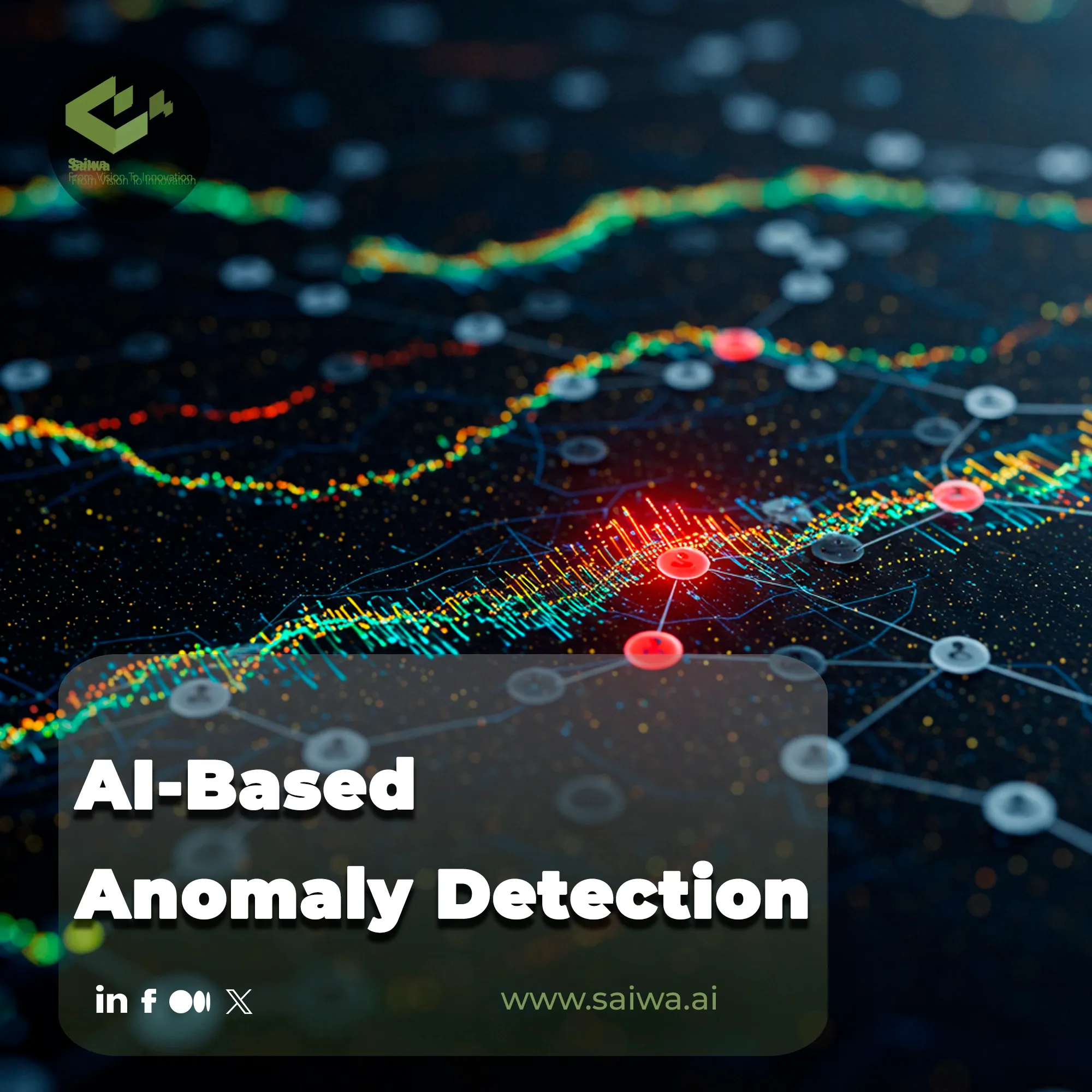The sheer velocity and volume of modern data have long surpassed the limits of human monitoring. The subtle deviations that signal major problems are lost in the flood unless we use technology that thinks at machine speed and sees patterns in the noise. Solutions like Saiwa's Fraime provide this "computational lens" to spot outliers instantly. This article will dissect the powerful algorithms that grant this superhuman capability, showcasing how they are applied across various industrial landscapes for tangible results.
Why Traditional Methods Fall Short
Traditional anomaly detection methods, such as rule-based systems, are unable to keep pace with the scale and complexity of modern data. These rigid approaches depend on predefined thresholds or static patterns, making them ineffective at identifying subtle or evolving anomalies. As datasets grow larger, more dynamic, the limitations of these techniques become more apparent.
In contrast, AI-driven anomaly detection adapts to changing trends, learns from new data, and excels at identifying complex, hidden irregularities. This adaptability enables businesses to achieve greater accuracy, scalability, and reliability in monitoring and decision-making processes.

How Does AI Anomaly Detection Work?
At its heart, artificial intelligence brings a dynamic and adaptive approach to identifying outliers, moving far beyond static thresholds. The process is a systematic journey from raw data to intelligent insight, which typically unfolds across several crucial stages you should be aware of:
Data Collection and Preprocessing: Gathering and cleaning diverse data streams to ensure quality.
Feature Selection: Identifying the most relevant data variables or signals that define normal behavior.
Model Training: Using historical data to teach the AI what "normal" looks like, creating a sophisticated behavioral baseline.
Anomaly Detection: Actively monitoring new data against the trained model to flag statistically significant deviations.
Feedback Loop: Incorporating human validation to continuously refine and improve the model's accuracy over time.
Core Methods Used in AI-Based Anomaly Detection
To perform this sophisticated task, a range of algorithms and techniques are utilized. These methods vary in complexity and approach, allowing for tailored solutions depending on the specific problem and data available. Understanding these core methods is key to appreciating the power of AI-Based Anomaly Detection. We can categorize the main approaches as follows.
Statistical Methods
These foundational techniques use statistical models to define a normal range and identify data points that fall outside it.
Machine Learning and AI Algorithms
This includes more advanced methods like Isolation Forest, Autoencoders, and Clustering algorithms (e.g., DBSCAN) that learn complex patterns without explicit programming.
Hybrid Methods
These approaches combine statistical models with machine learning algorithms to leverage the strengths of both for higher accuracy and robustness.
Supervised vs. Unsupervised vs. Semi-Supervised Detection
The choice between these depends on data availability: supervised methods use labeled data (both normal and anomalous), unsupervised methods work with unlabeled data to find unusual patterns, and semi-supervised models train primarily on normal data.
Industries Leveraging AI for Anomaly Detection
The practical applications of this technology span nearly every major industry, providing immense value by pre-empting issues and optimizing processes. Its impact is particularly transformative in the following domains:
Cybersecurity: Detecting network intrusions and malware by identifying unusual traffic patterns.
Fraud Detection: Flagging suspicious financial transactions in real-time.
Healthcare: Monitoring patient data from wearables to detect early signs of health issues.
Industrial Systems: Identifying production flaws in manufacturing lines or optimizing IIoT operations.
Predictive Maintenance: Forecasting equipment failures before they occur, preventing downtime.
Read Also : Surface Anomaly Detection - Smarter Quality Control

Challenges in AI for Anomaly Detection
While the benefits of AI anomaly detection are undeniable, deploying it in real-world environments comes with unique challenges. Organizations often face both technical and operational hurdles that influence accuracy, scalability, and adoption. Understanding these barriers is crucial to designing effective systems.
Data Imbalance: In most scenarios, anomalies are far less common than normal data. This imbalance makes it difficult for models to learn patterns of abnormality, leading to potential bias toward predicting normal outcomes.
Concept Drift: What is considered “normal” can evolve over time. Customer behavior, market trends, or production conditions shift, requiring constant model updates to ensure reliable results. Without adapting to these changes, false alarms or missed anomalies become frequent.
False Positives vs. False Negatives: Striking the right balance between sensitivity and precision is one of the hardest challenges. Too many false positives overwhelm teams with alerts, while false negatives allow critical issues to go undetected.
Scalability and Real-Time Processing: Many industries require anomaly detection on massive, fast-moving data streams. Ensuring that AI for anomaly detection can operate in real-time, without sacrificing accuracy, demands advanced architectures and optimized infrastructure.
Explainability and Trust: Complex machine learning models often act as “black boxes.” Building transparent systems that explain why something was flagged as anomalous is vital for user trust and compliance, especially in regulated sectors.
Overcoming these challenges allows businesses to fully unlock the potential of AI anomaly detection, turning raw data into actionable intelligence with confidence.
Fraime: AI-Powered Anomaly Detection Solutions for Modern Enterprises
For enterprises seeking to harness this power, the challenge often lies in implementation. This is where a platform like Fraime excels. As an AI-as-a-Service, Fraime provides developers and engineers with direct access to pre-built, high-performance computer vision tools.
Its capabilities in Object Detection, for instance, serve as a foundational element for building sophisticated AI visual inspection systems. A manufacturer could use this to automatically spot defects on an assembly line, just as an agricultural specialist might leverage it for automated plant health monitoring, identifying sick crops as anomalies in an otherwise healthy field.
Conclusion
Ultimately, AI-Based Anomaly Detection has evolved from a niche algorithmic concept into a cornerstone of modern business intelligence and operational resilience. Its adoption empowers organizations to shift from a reactive to a proactive stance, identifying critical issues before they escalate. This capability is no longer just a technical advantage but a strategic imperative for navigating today's complex digital landscape.
Note: Some visuals on this blog post were generated using AI tools.

